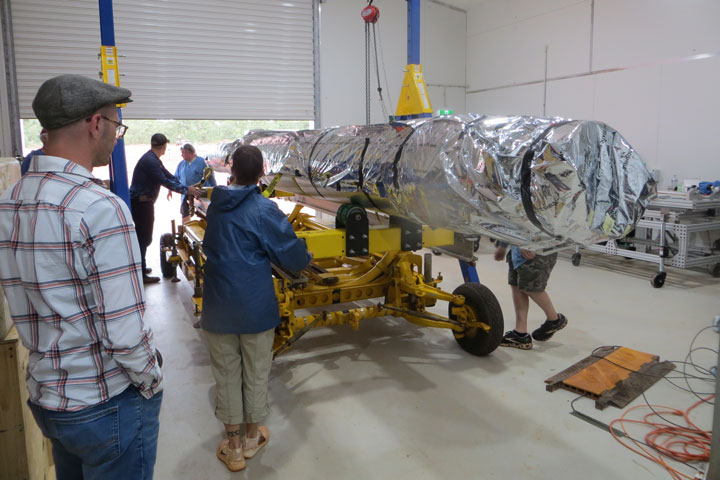
Alex Haughton is a graduate student in the Astrophysical and Planetary Sciences department at University of Colorado Boulder studying ultraviolet instrumentation with sounding rockets. His team has traveled to Equatorial Launch Australia’s Arnhem Space Center near Nhulunbuy, Australia to launch the Dual-channel Extreme Ultraviolet Continuum Experiment (DEUCE) Sounding Rocket and observe the stars Alpha Centauri A & B in extreme ultraviolet wavelengths.
It takes a village to send something to space.
Currently, the Suborbital Imaging Spectrograph for Transition region Irradiance from Nearby Exoplanet host stars (SISTINE) rocket payload is sitting on the launch pad ready to go. As we wait for high winds to die down, I am reflecting on how many people it takes to get here.
SISTINE has a science team of four people in East Arnhem Land, but many others were left back at the lab in Colorado – mechanical and electrical engineers, technicians, graduate and undergraduate students. The payload itself consists of a telescope made by Nu-Tek in Maryland, special ultraviolet reflective coatings applied by NASA Goddard, a diffraction grating made by Horiba JY in France, and a microchannel plate detector made by Sensor Sciences in Berkely. If all those things sound like advanced technology that take a lot of people, work, and know how to make, it’s because they are.
And that’s just the science payload. There’s the minor matter of launching it into outer space. There are over 70 people here from NASROC (NASA Rockets), White Sands Missile Range, and NASA. These are people who can set up and operate the motors of a sounding rocket (the part that goes boom), people who can set up antennas to communicate with the rocket as it flies to and from space and monitor where it is, people who can point the rocket in the right direction when it gets there, people to pick up the rocket and bring it back when it comes back down, and people to manage all these other people. This blog post is facilitated by a NASA communications team sent to cover the launch (you can find some of their excellent work here).
Then there’s the local infrastructure. The launch site itself was built with a partnership between Equatorial Launch Australia and the Gumatj Corporation, the Indigenous owned and run corporation that manages the land on which the launch site was built. East Arnhem Land is beautiful, but densely populated it is not, and the influx of people requires places to stay, food to eat, vehicles to drive, and other resources that stretch the capabilities of the nearby town of Nhulunbuy (the area has responded admirably).
I feel like there’s a tendency to put a single face on scientific discovery or technical achievement. The Nobel Prizes certainly tend in this direction. Theoreticians of the past may have had fewer people supporting them, but modern scientific discoveries are built on the culmination of years, if not decades, of hard work by large teams of people, all of whom are critical to success.
Sometime in next few decades the astronomy community will begin detecting and analyzing atmospheric data from potentially habitable exoplanets. There’s a chance life signatures could be discovered. When this happens, the next two launches, along with a multitude of other projects, will have helped paved the way for that discovery. And these two launches, small potatoes compared to what it takes for even moderately sized space telescopes, take a village to succeed.




Heⅼlo colⅼeɑgues, pleasant paragraph and nice
arguments commented here, I am actually enjoying by
these.